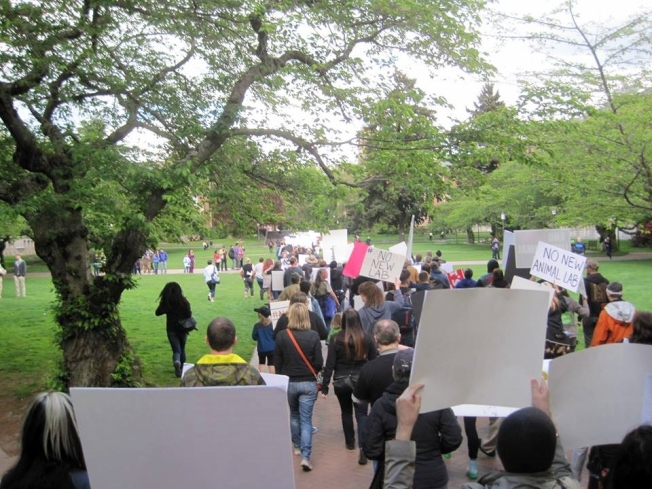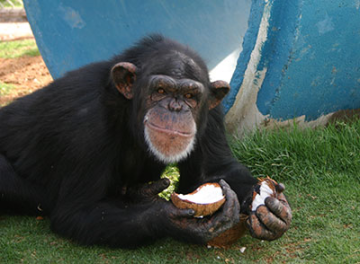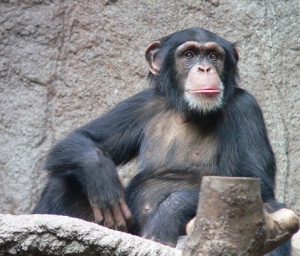Yesterday I had the privilege of being a guest at Chimpanzee Sanctuary Northwest. The sanctuary, 90 miles east of Seattle in the beautiful Cascade mountains, is home to seven former biomedical test subjects who now live out their days in peace and free from harm. It’s not a zoo (it’s set up for the chimps, not for visitors) and I was lucky to be able to stop by.
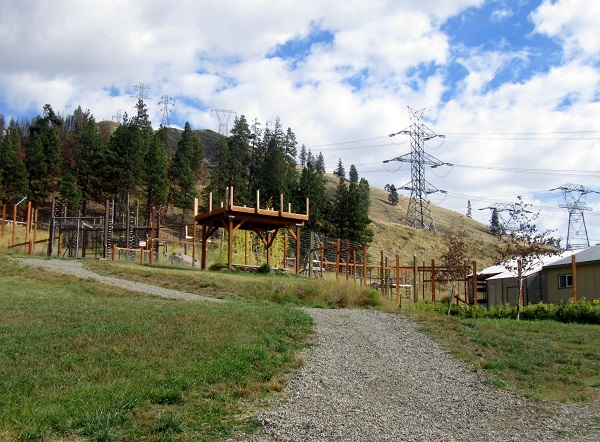
I had a hard time imagining the sad existence these intelligent, curious creatures had to endure for a quarter century. They lived (if you can call it living) twenty-four hours a day in a steel cage like the one I’m standing next to. It’s almost the same as me living in solitary confinement in my bedroom closet.
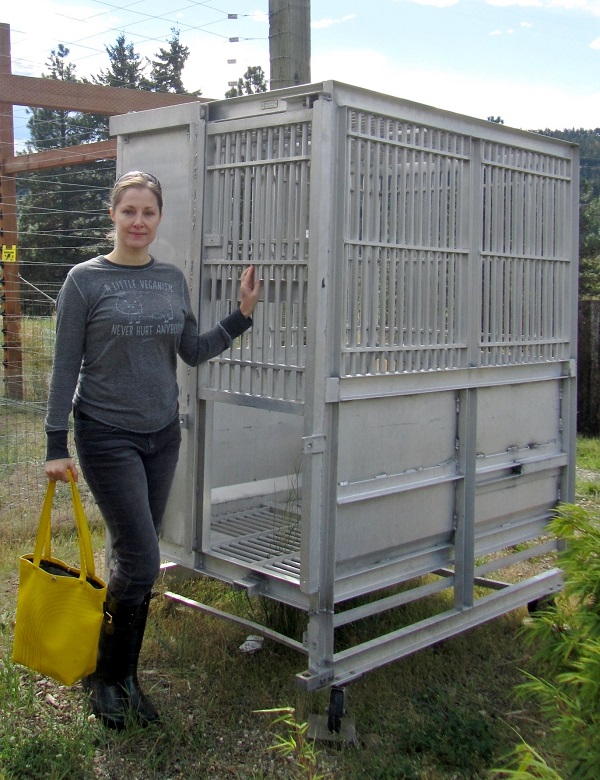
A cold metal cage with slats for waste to fall through was the only environment they had. They were warehoused indoors, away from sun and fresh air–all in the name of science. I’ve written before about why I don’t agree with animal testing, and these chimps are seven more reasons why I want it stopped.
The sanctuary is home to Jamie, Annie, Jody, Foxy, Missy, Burrito, and Negra. I visited over the lunch hour and watched the chimps forage for a meal. Volunteers hide food over Young’s Hill, the chimps two-acre outdoor enclosure, so they have an experience closer to how wild chimps find food.
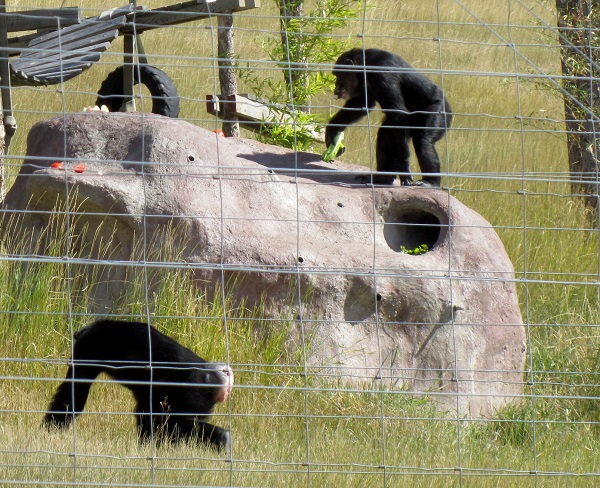
The chimps enjoy lots of fresh fruit and veggies and they enjoyed the sunny fall day, as they wandered through the grass looking for treats. There’s even an artificial termite mound so the chimps can use tools to pull treats out of tubes in the structure.

Some of the chimps, like Negra, and possibly Jody and Annie, were born in the wild, and saw their families get slaughtered so people could take the babies–them–to be used as pets or research subjects.

Others, like Jamie, Missy, Foxy and Burrito, were born in captivity. Burrito lived in a human home for his first four years, but was then rented out to an animal trainer and later sold to a research lab. He’s the very reason I do not support companies or movies that use primates in their commercials or films. The chimps they use are babies who have been stolen away from their families and will likely end up in research when they’re too old and unruly–or simply warehoused and left to suffer alone.

Jody, Annie, Foxy, Missy, and Negra were all used as breeders and had several babies each taken away from them to be used in experiments too. It’s heartbreaking to think about how they must have grieved over their losses.

When they’re not enjoying the great outdoors (and safely behind an electric fence), the chimps have a great indoor space to enjoy. They play with toys, color and paint, and make chimp nests out of blankets. They’re making up for lost time.
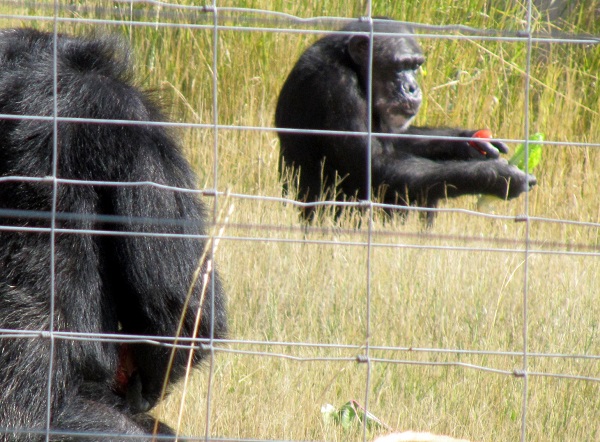
This group of chimps came from the same lab and knew each other in their previous lives. They’re seniors now and deserve to live life at whatever pace they choose. Sometimes that means running around full of energy; other times, it’s relaxing in front of the window and watching the world go by,
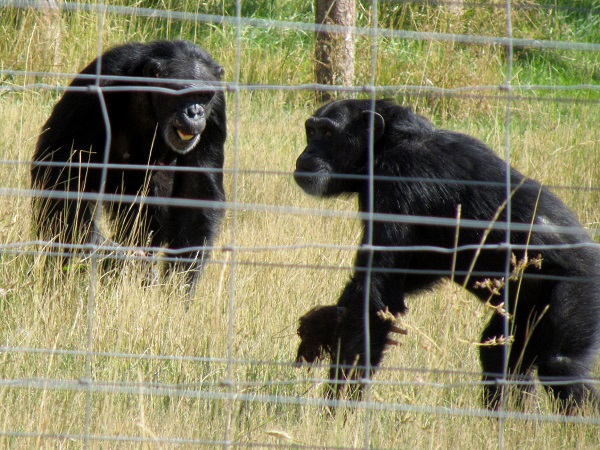
The chimps have been deprived their whole lives and are at the Sanctuary to heal and become whole again. They’re still very much wild animals so they’s no direct contact with them. They’re finally free to choose how and where to spend their time, and that’s a valuable thing,
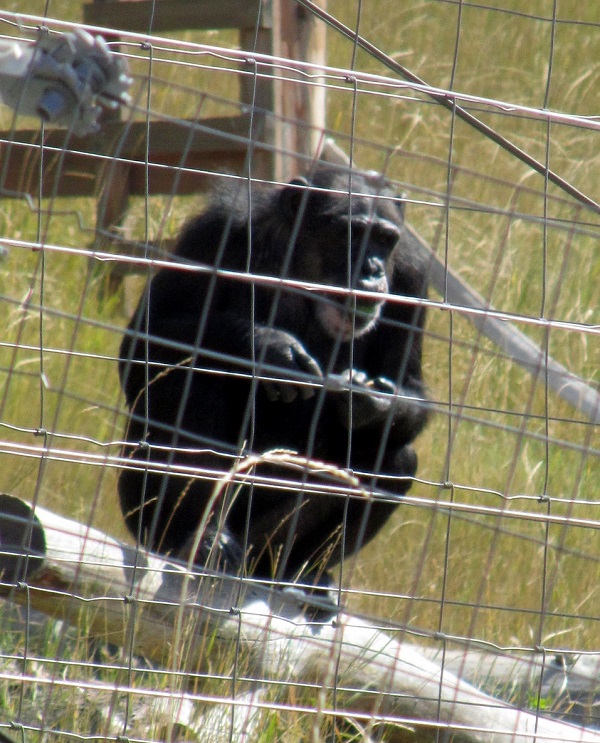
Over 900 chimpanzees are still in research labs around the USA–down from 3000 at the height of primate research. Only the USA and Gabon still test on chimps. You can help wild and captive chimps by joining Eyes on Apes and participating in action alerts to stop testing, poaching, and using chimps in entertainment.
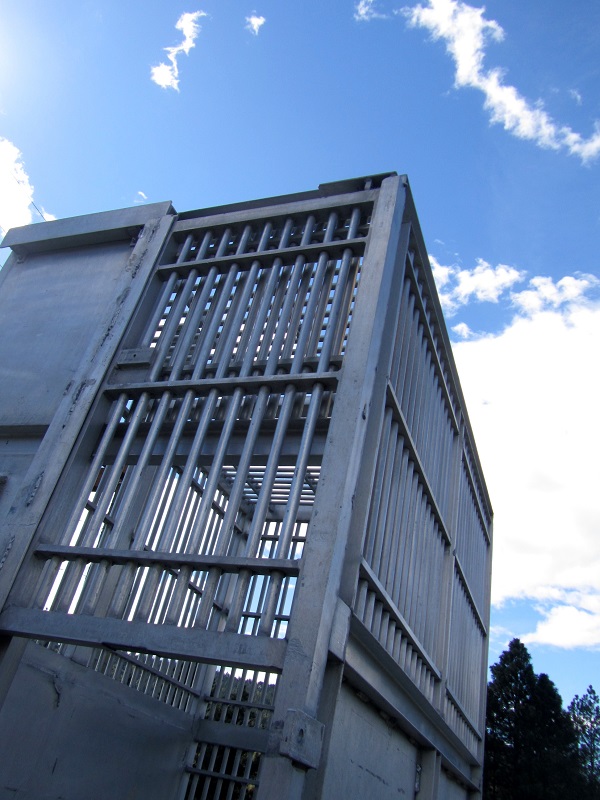
May all chimps one day see blue skies, not barren steel.








